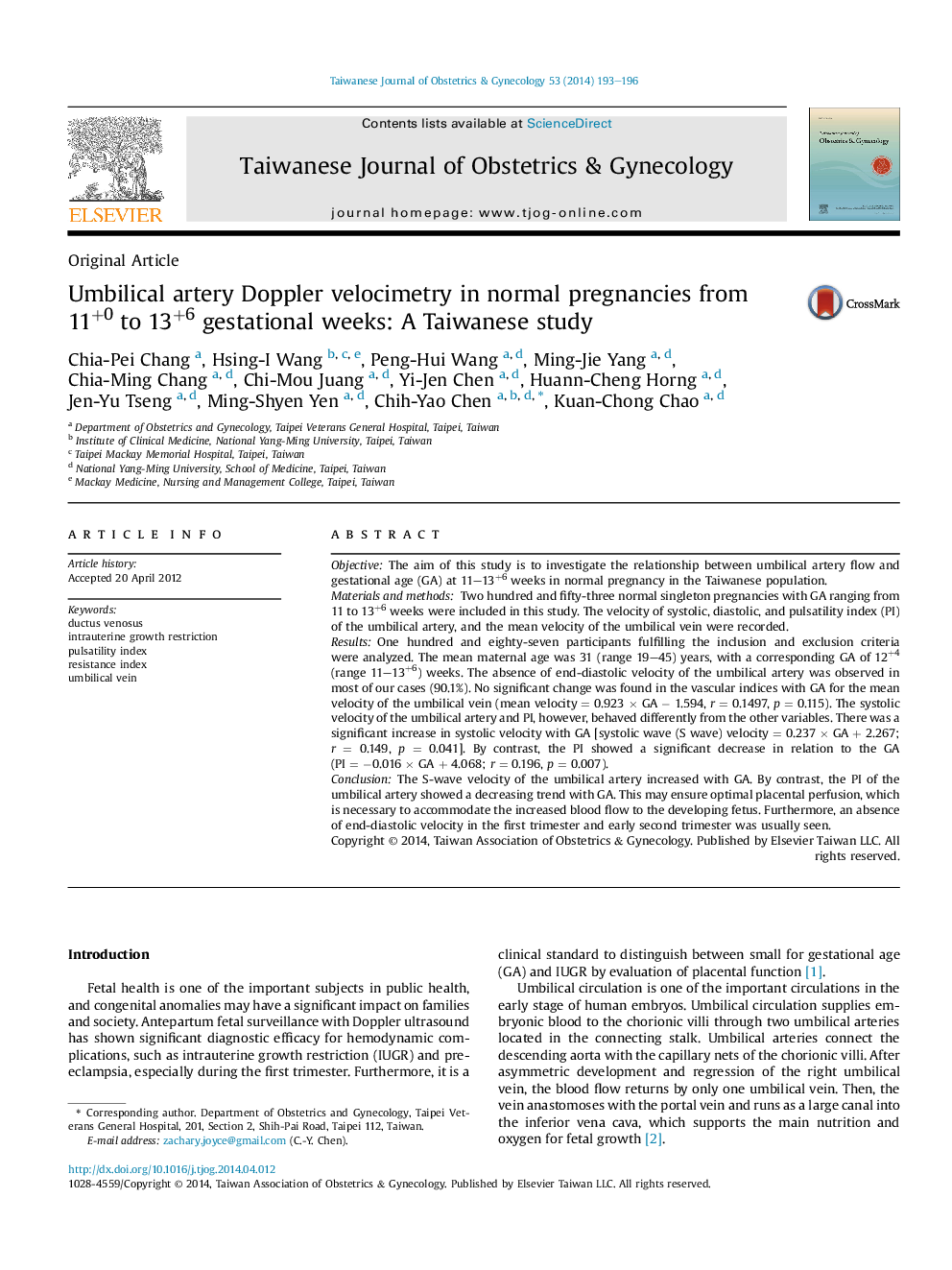| Article ID | Journal | Published Year | Pages | File Type |
|---|---|---|---|---|
| 3975124 | Taiwanese Journal of Obstetrics and Gynecology | 2014 | 4 Pages |
ObjectiveThe aim of this study is to investigate the relationship between umbilical artery flow and gestational age (GA) at 11–13+6 weeks in normal pregnancy in the Taiwanese population.Materials and methodsTwo hundred and fifty-three normal singleton pregnancies with GA ranging from 11 to 13+6 weeks were included in this study. The velocity of systolic, diastolic, and pulsatility index (PI) of the umbilical artery, and the mean velocity of the umbilical vein were recorded.ResultsOne hundred and eighty-seven participants fulfilling the inclusion and exclusion criteria were analyzed. The mean maternal age was 31 (range 19–45) years, with a corresponding GA of 12+4 (range 11–13+6) weeks. The absence of end-diastolic velocity of the umbilical artery was observed in most of our cases (90.1%). No significant change was found in the vascular indices with GA for the mean velocity of the umbilical vein (mean velocity = 0.923 × GA − 1.594, r = 0.1497, p = 0.115). The systolic velocity of the umbilical artery and PI, however, behaved differently from the other variables. There was a significant increase in systolic velocity with GA [systolic wave (S wave) velocity = 0.237 × GA + 2.267; r = 0.149, p = 0.041]. By contrast, the PI showed a significant decrease in relation to the GA (PI = −0.016 × GA + 4.068; r = 0.196, p = 0.007).ConclusionThe S-wave velocity of the umbilical artery increased with GA. By contrast, the PI of the umbilical artery showed a decreasing trend with GA. This may ensure optimal placental perfusion, which is necessary to accommodate the increased blood flow to the developing fetus. Furthermore, an absence of end-diastolic velocity in the first trimester and early second trimester was usually seen.
